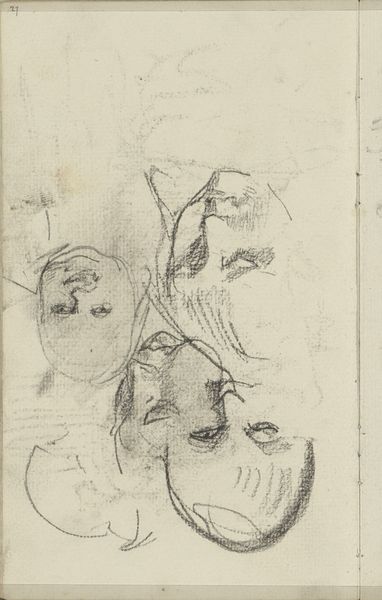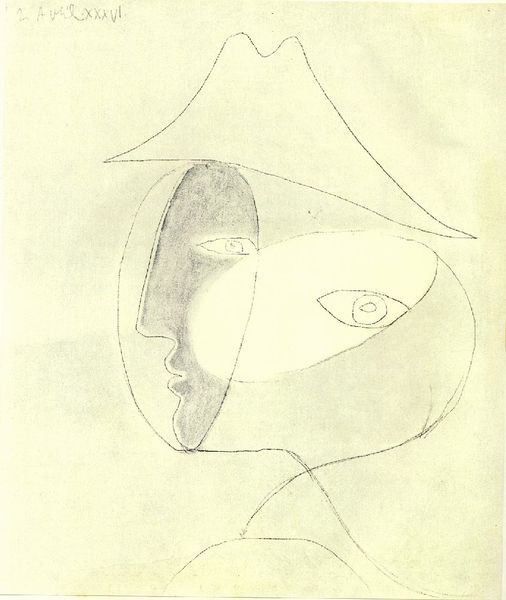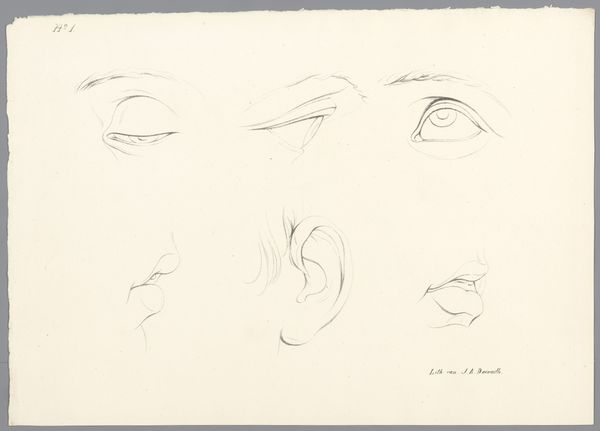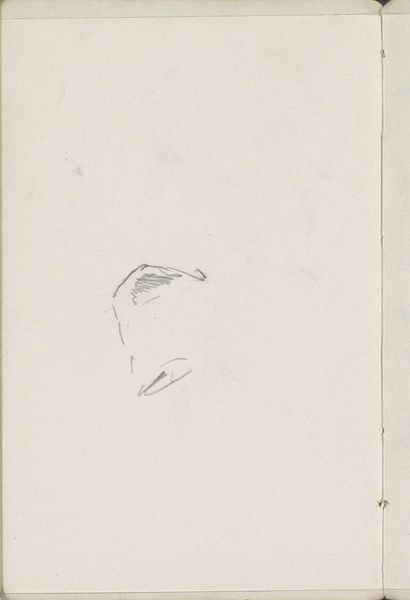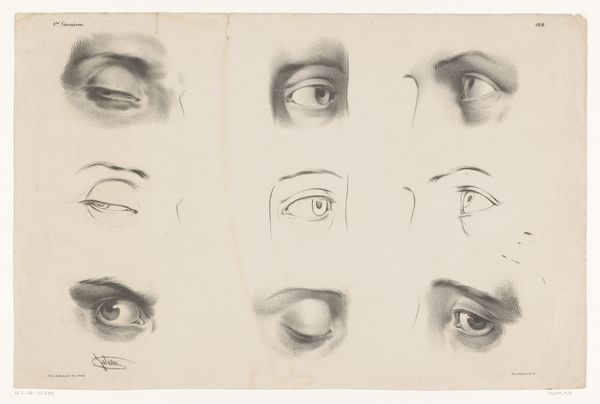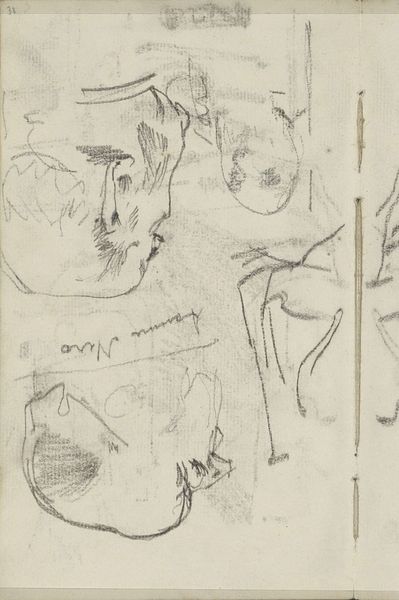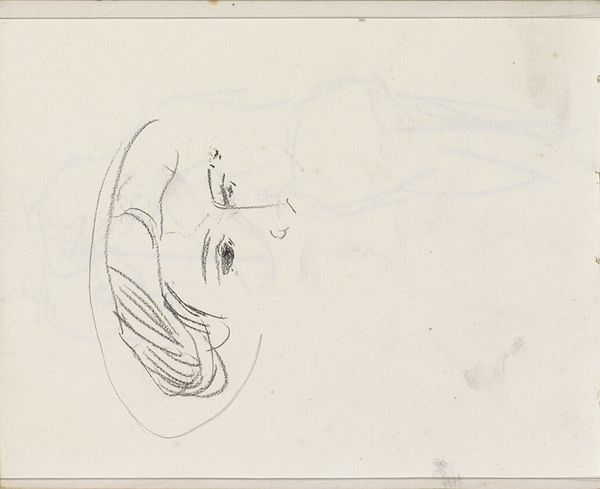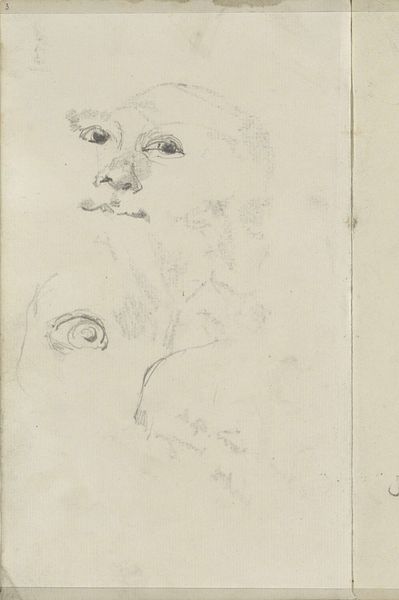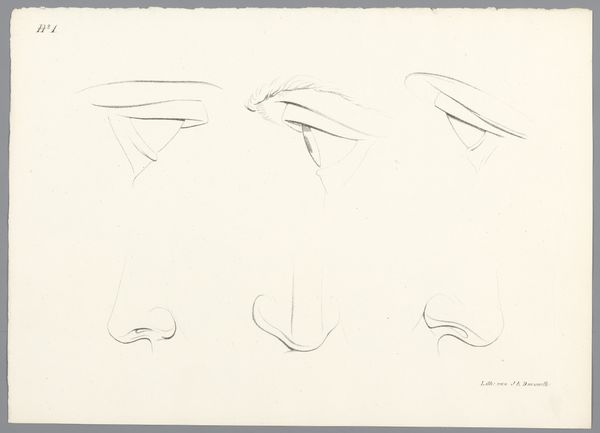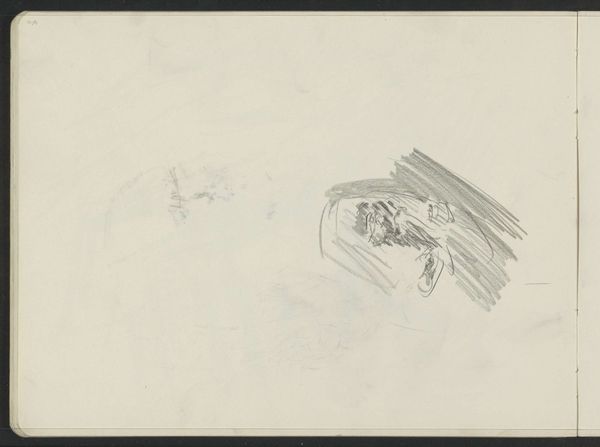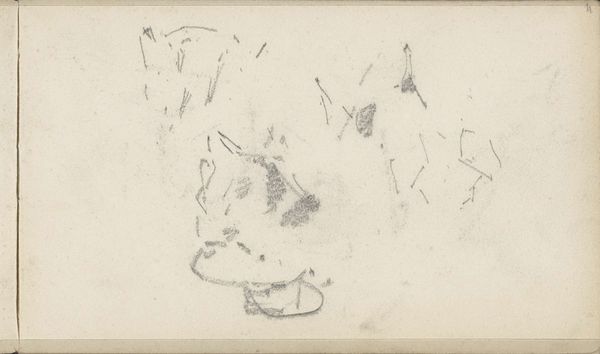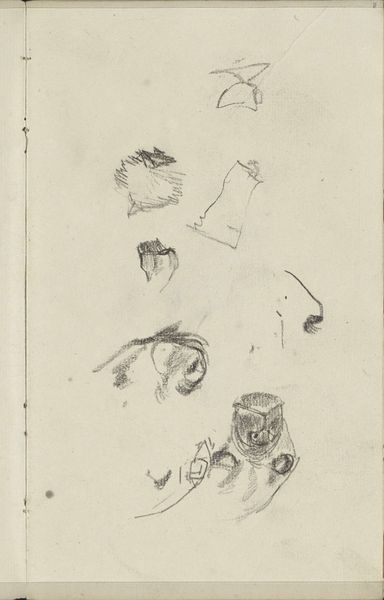
drawing, paper, pencil
portrait
drawing
self-portrait
pencil sketch
figuration
paper
pencil
realism
Curator: Here we have Julie de Graag’s intriguing pencil drawing, titled “Ogen,” dating back to approximately 1894. It's held here at the Rijksmuseum. What are your initial impressions? Editor: Eerily compelling! It feels like a page torn from a sketchbook—disjointed facial features and abstract marks adrift on the paper, an interesting discordance between the representational and the not. Curator: De Graag was working within a specific artistic milieu at the time. Considering the material—pencil on paper—we can speculate on her working methods. Perhaps she utilized readily available, inexpensive materials, and we should acknowledge the socio-economic accessibility such work implies, aligning with certain art collectives that valorized artistic production as daily craft. Editor: That’s an insightful framing, of course, but the form is fascinating. The composition feels fragmented—the floating eyes juxtaposed with the ghostly, unfinished self-portrait hint at the artist exploring partiality. Is she dissecting the gaze? Curator: Exactly. We should explore beyond formalism. Pencil sketches like this reflect on artistic labor—how female artists at this time negotiated their practice while often facing constraints regarding access and societal expectations of women's work and training. This can't be ignored! Editor: The texture made solely with pencil seems like a deliberate artistic choice. By not completing the drawing, she opens a possibility, a space to see drawing itself as an open investigation of a potential form instead of a record. Curator: Yes! And it’s important to examine the role of drawing as a practice rooted in design; and further understand the paper production itself—it’s sizing, source, and manufacturer. It’s the confluence of artist labor and material constraints creating meaning. Editor: But doesn’t this reduce art to purely the sum of its historical conditions? What of the image? The multiplication of seeing organs makes a statement, wouldn’t you agree? Perhaps alluding to hyper-awareness, artistic seeing? Curator: Okay, I appreciate the insights regarding composition, while it is necessary to remember all those historical impositions as potential drivers for art production that would have constrained Julie. We must also question whose gaze is privileged here—the artist's, or perhaps society’s view looking back upon her? Editor: It leaves so much to interpretation, perhaps this openness is a critical strength and achievement in this beautiful, uncanny sketchbook page. Curator: It makes us question, reflect, and seek answers and maybe to reassess how art can both reflect and critique cultural norms through labor and materiality.
Comments
No comments
Be the first to comment and join the conversation on the ultimate creative platform.
